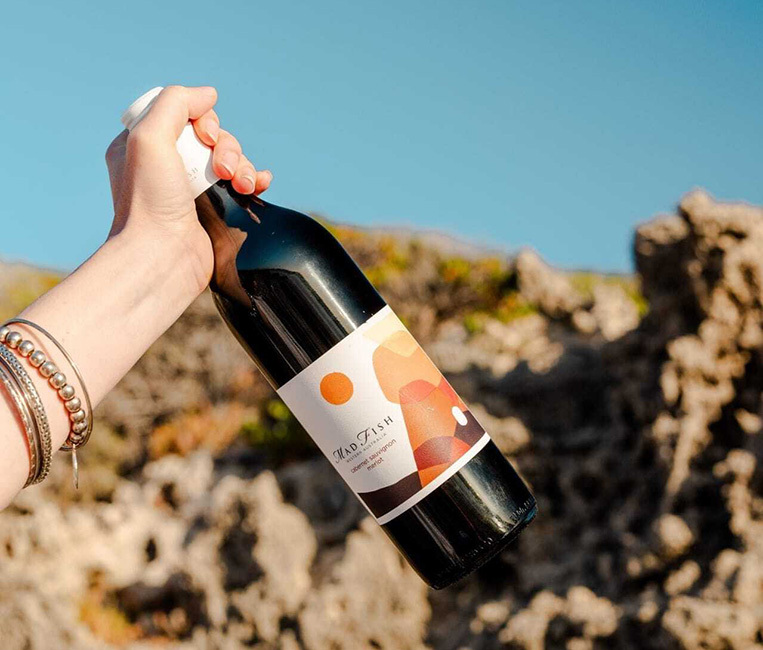Discover New Portugal

Portugal has for far too long been synonymous with Port wines for which the country was plenty grateful but the last two decades has seen Portugal emerge as an exciting maker of cool modern wines from homegrown grapes. Let’s explore New Portugal
The Iberian Peninsula is an enviable trove of sumptuous wines, most of which have for long been attributed to Spain that regularly puts out charming red wines. Portugal is the other Iberian member that has, for centuries now, associated with opulent fortified wines, popularly referred to as ‘Ports’. Port wine has been the inarguable purple flake for Portugal across generations with a history of over 335 years. The fortified wine, created accidentally through necessity by the British, became the foundation of the Portuguese wine industry, concentrated almost exclusively in the northernmost region of Duoro Valley. Meaning gold in Portuguese, Duoro is hailed as the gold standard for fortified wines and its diversity of Port wines ranging from accessible Ruby Ports to rare vintage Ports are the major draw for a pilgrimage to the Duoro Valley and the nearby city of Porto from where in the old day, Port was shipped out to the rest of Europe.
But this is a new century and this is a new Portugal – an integral part of the European Union and the bustling wine universe with a focus on making modern still wines from indigenous fruit. This ambitious and hitherto successful enterprise to re-position Portuguese wine has seen the emergence of a number of regions, mining and discovering the unique strengths of their respective terroir. The literally ‘hot’ reaches of Alentejo on the Spanish border makes unapologetically full bodied reds while Lisboa and Bairrada specialise in fruit forward bubblies. Tejo is well known for aromatic whites. There are two regions though that have amped up Portugal’s reputation for making staggeringly good still wines. Dao’s focus on exploring different styles of flagship Portuguese grape Touriga Nacional and Vinho Verde’s modern ‘Green Wine’ revolution have been key to defining the New Portugal and they’re only getting started.
Dão
A region that enjoys a status comparable to the one Burgundy enjoys in France certainly deserves the limelight. The wines of Dao have impressed critics for many vintages and though the region has gained most of its popularity in recent times, the region itself has a recognised classification for over 117 years. Dao is a relatively small region with precious little area suitable for vineyard plantations. A mild climate, a mountainous defence against harsh weather and hardy, granite soils that make the fruit work and suffer have combined well to give winemakers, raw material of great promise to turn into ferments of high promise. The region’s local stars of Touriga Nacional, Tinta Roriz, Alfrocheiro Preto, Encruzado and Malvasia have led Dao’s best foot forward in the international market. Wine Park ships in a hedonistic red wine blend from Dao produced by Quinta di Cabriz, a boutique producer with94 hectares of vineyards at altitudes of nearly 800 metres. The Quinta Di Cabriz, Selecionada Dao is a medium bodied yet intense and wholesome red blend that underscores the greatness of the Dao region. Each of the three grapes in the blend play their part though the Touriga Nacional stands out for its red fruit character and spicy touches.
Vino Verde
Vinho Verde nestles in Portugal’s windswept northwest region of Minho and is Portuguese for green wine. Which is not to say the wine is too young and untested. In fact both the region and wine are an exciting modern phenomenon. The region is best known for making lively and palate-delighting wines with a touch of fizz from an abundance of local grapes. Vinho Verde comprises verdant and lush landscape a lot of it is carpeted by vineyards across nine distinct sub regions watered by the Minho river. A cool northerly climate helps allow the fruit to retain good acidity while ripening adequately. The region’s most popular wine is the Vinho Verde White Blend produced from six grapes, namely Alvarinho, Arinto, Azal, Avesso, Loureiro, and Trajadura.
While red and rose production is modest, they are also produced from indigenous grapes Vinho and Padeiro. Wine Park’s Vino Verde wine, Ameal Loureiro, has been widely adored. The family estate of Quinta do Ameal is regarded as a prime flagbearer of high quality white wines in Portugal’s north. Based in the famous Vino Verde’s sub region of Lima, the estate is best known for its finest expression of the indigenous grape Loureiro. The grape carpets all of the estate’s 14 hectares of vineyard which are organically farmed by owner Pedro Araújo. The classic estate style shows crisp character and bright acidity. Critics attribute Quinta do Ameal’s success not just to its long history with the Loureiro grape or its disciplined organic approach but also Araujo’s principle of farming less than 5 tons of grape per hectare when most of the region’s wineries take at least 15 tons per hectare. The concentration and integrity of flavour shine through in Quinta do Ameal’s wines as does the family house’s impeccable reputation.





